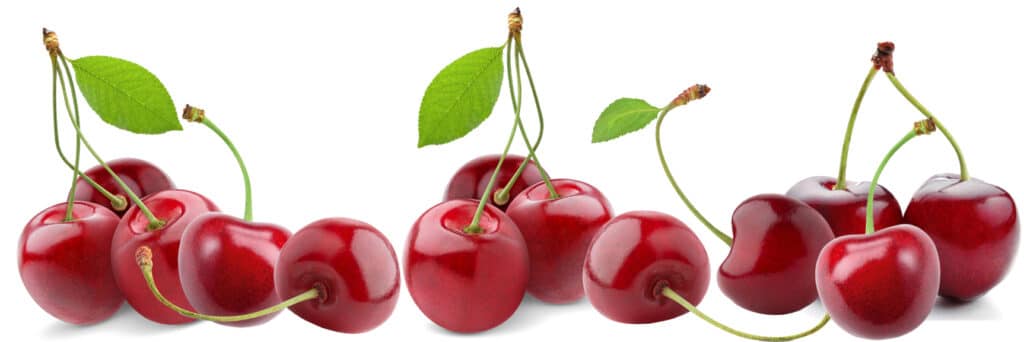Source: Paul Makube, senior agricultural economist at FNB agri-business, photo credit: www.cherryfarm.co.za/Klondyke Cherry Farm
21 July 2020: The South African economy has faced challenges in the recent times with Gross Domestic Product (GDP) declining by 2% quarter on quarter (q/q) in 1Q20. This comes after South Africa recorded contractions of 1.4% and 0.8% in the two preceding quarters respectively. However, the one sector that has outperformed other sectors is Agriculture. The sector increased by 27.8% q/q due to higher production of animal products, horticulture and field crops amid favourable weather conditions.
Below are some of the key factors looking at the state of agriculture in South Africa’s economy
Agriculture performance
Underpinned by the enormous contribution from field crops, horticultural products and animal products, 1st quarter GDP for agriculture forestry and fishing industry sector increased by 27.8% q/q with a 0.5 percentage point positive contribution to the country’s GDP.
Good weather conditions boosted crop prospects, allowing farmers to plant 7% more hectares (ha) under commercial grain and oilseed crops. Planted area for maize, SA’s largest staple, was alone 13% higher year-on-year (y/y) at 2.61 million ha. The expected total maize harvest now hovers around 15.51 million tons which is 37.6% higher relative to the 2019 levels according to the CEC June 2020 estimates. Meanwhile, strong export demand boosted maize revenues with 1st quarter 2020 total of 512,800 tons, which is 86% higher y/y.
In the oilseed complex, the soybeans estimate was 1.26 million tons which is 7.8% higher than last year despite a 3% contraction in planted area. The sunflower estimate was 13% higher y/y at 765,960 tons on much better yields as planted area also decreased by 3%. The groundnuts harvest jumps 169% y/y at 52,140 tons due to a whopping 87% increase in hectares.
A combination of relatively good production conditions, a sharply weaker rand and the rebound in exports boosted performance in the fruit sector despite port challenges. Averaging R15.36, the rand/ US dollar exchange rate depreciated by 4% on the last quarter of 2019 and 10% y/y, which was beneficial for exporters.
Economic outlook for the rest of the year
Given the bullish harvest outlook for both the summer and winter grain and oilseed crops, as well as citrus, it is expected the current stellar performance from the sector will spill over into the subsequent quarters of 2020 despite the COVID-19 disruptions.
Weather conditions have since turned positive for the winter rainfall areas with good snow coverage and heavy rains in the Western Cape province. The result has not only been good moisture replenishment, but also the much-needed flows through the rivers to the region’s dams which saw dam levels lifting by 7.5 percentage points (ppts) week-on-week (w/w) and 6.7 ppts year on year (y/y) to 53.5% full during the week ended 13 July 2020 according to the data from the Department of Water and Sanitation. This is good news for the winter crops with wheat farmers optimistic about this year’s harvest.
For the new crop season ahead, the recent forecasts indicate good chances of a La Niña weather pattern which has historically been associated with good rainfall for the Southern African region. Although it is still about two months before the onset of the new crop season, these forecasts indicate positive developments for the agriculture sector and signals another season of bumper harvest following the impressive 2019/20 season.
Impact of Covid-19 on agriculture
The impact has been varied in subsectors with fresh produce initially impacted negatively due to the hawkers not being able to trade as well as fast-foods and restaurants being closed. Some farmers who produce vegetables such as lettuce used in restaurants had to disc them. Diesel shortages due to the backlog at refineries after the lockdown also impacted on some of the producer operations. However, the sector was overall minimally impacted as the most could operate and export due to being declared an essential service.
Opportunities and challenges in the agricultural sector
The biggest potential for the sector is in post-COVID-19 upliftment of critical infrastructure such as rail, ports, water and related services to support the high value export commodities such as citrus, avocados, macadamias.
Some challenges include logistical challenges emanating from measures to contain the COVID-19 spread. Activity in some ports has been slowed by intermittent stoppages due to the detection of personnel infections that necessitate the disinfection of the areas. Delays cause port congestion prompting some of the shipping lines to start implementing surcharges or even by-passing ports.
Contribution to employment
Although having contracted by 2.3% q/q during the 1st Q2020 at 865,000 jobs, employment in the agriculture sector was up 3.3% y/y and has increased by 8% relative to the same period in 2008.
Agriculture’s contribution historically is about 2.5% to GDP, however, given its backward and forward linkages to the rest of the economy this figure is even higher. The estimated number of commercial farming units in South Africa is 39,966 units according to the National Department of Agriculture, Forestry, and Fishing based on the last Census conducted by Statistics South Africa in 2007.
The South African Pork Producers’ Organisation (SAPPO) coordinates industry interventions and collaboratively manages risks in the value chain to enable the sustainability and profitability of pork producers in South Africa.
















